If you’ve been making Kombucha for a while, you know that the SCOBY (mother culture) grows thicker with each batch. Learn how to divide a SCOBY so you can share with friends, dehydrate it, give it to your pets, or add it to your SCOBY hotel!
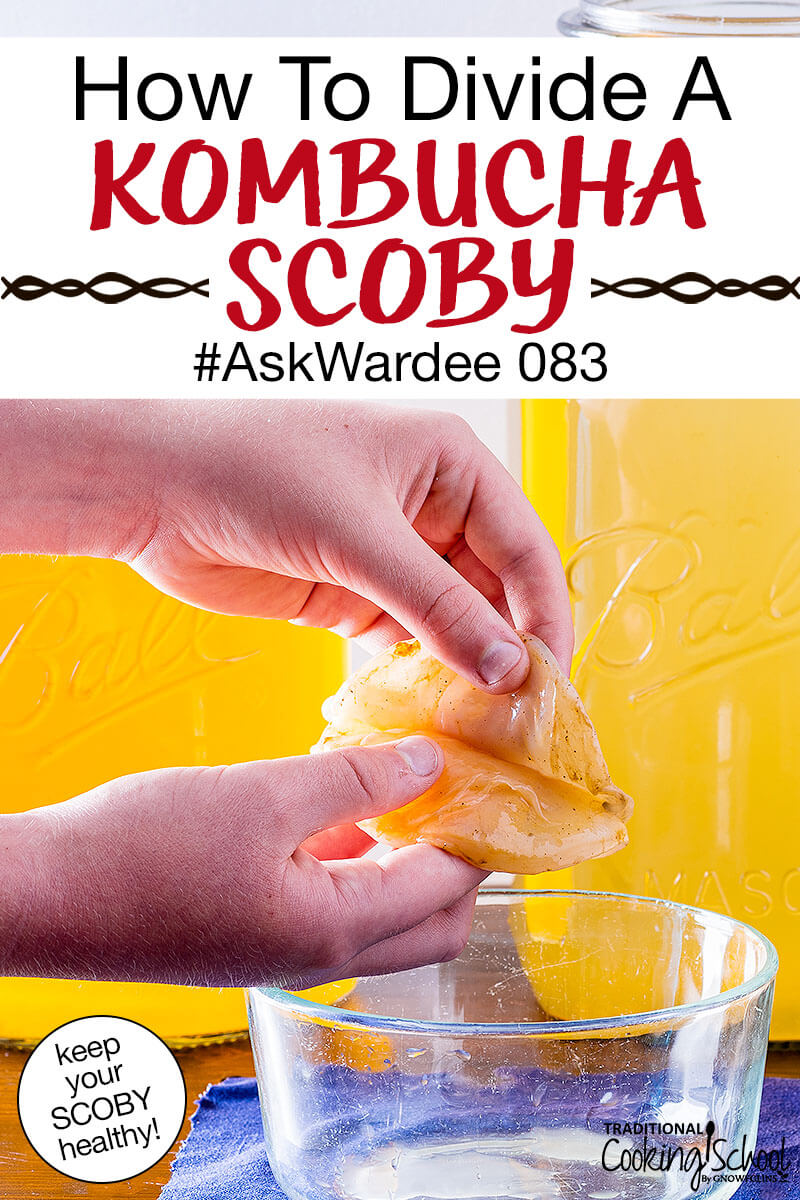
You’re making Kombucha, and it’s going great.
But after several batches, suddenly you notice your SCOBY (the mother culture) has gotten so big and thick it’s taking over the jar.
What to do? Divide it!
Not only can you share the extra with a friend, but your Kombucha batches will also turn out all the better for it.
On today’s #AskWardee I’m showing you how to divide your Kombucha SCOBY the right way!
Subscribe to #AskWardee on iTunes, Stitcher, YouTube, or the Podcasts app.
The Question: How To Divide A Kombucha SCOBY?
Elaine M. asks:
Would you consider talking about how to deal with the Kombucha SCOBY — it’d help to see how you divide it, etc. I have the continuous brew system and “Mildred” has just about taken over. Shouldn’t have named her — now it’s hard to think about doing away with a part of her… oh my.
My Answer
Elaine, you’re in a pickle. Those SCOBYs take over! So let’s talk about how to divide them and/or store them.
Mildred will forgive you. 🙂
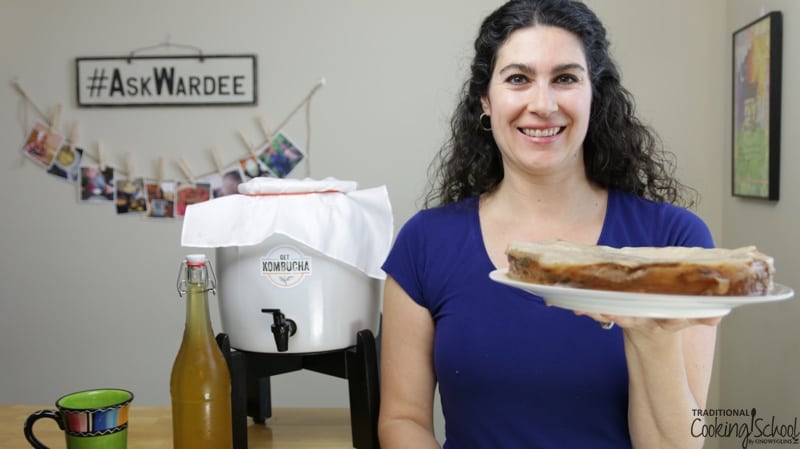
What’s A SCOBY? What’s Kombucha?
What is a SCOBY? It stands for Symbiotic Culture Of Bacteria and Yeast. It’s the mother culture that brews your Kombucha — a probiotic, fermented beverage we LOVE!
It’s shiny (when wet) and looks a bit weird. Like a sea creature, actually. A round disc-shaped something or other you’d imagine you’d find out deep-sea diving. 🙂
It can be smooth or lumpy. Some contain holes and have ragged or stringy edges. As long as there’s nothing fuzzy on them, black/white/brown/grey specks are normal, too. (Find out if your SCOBY is healthy here.)
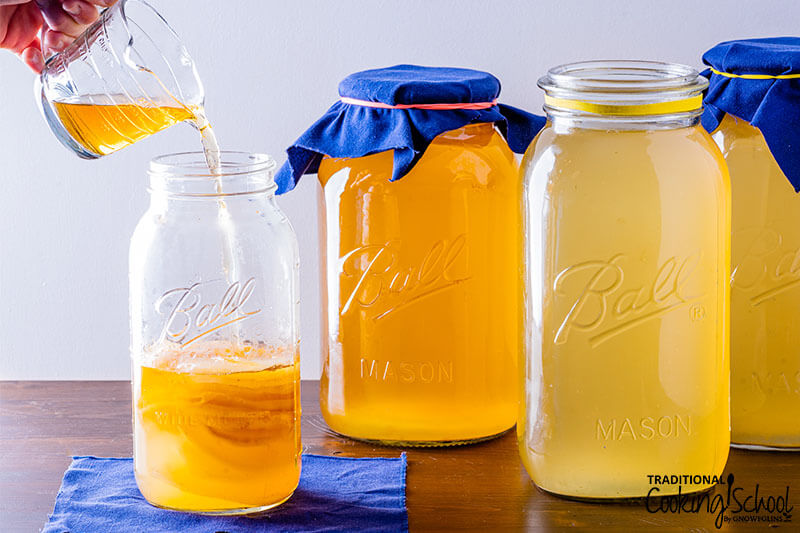
And how does brewing Kombucha work? You combine the SCOBY with sweet tea; the SCOBY floats to the top and feeds on the sweetener in the tea for a few weeks until you’ve got a bubbly fermented beverage with beneficial acids and bacteria.
At that point, you pour off the liquid, then start again with more sweet tea. What gets poured off is your finished Kombucha, which you can drink right away or do a second ferment in soda bottles (we do this a lot!).
By the way, we use the Continuous Brew Kombucha System pictured above. You can read more about that in my review here.
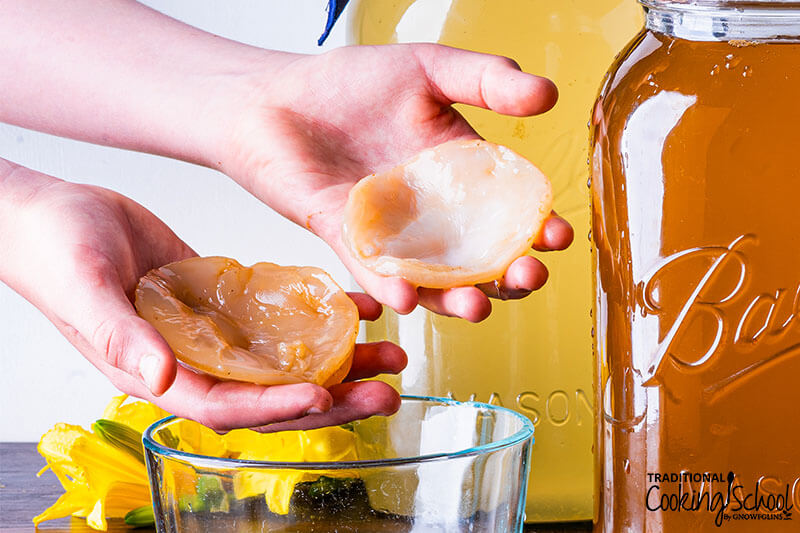
When To Divide Your SCOBY
So what happens with the SCOBY is… it grows as it makes successive batches of Kombucha.
It grows to fit the shape of the container, which usually means a round disc because Kombucha is most often brewed in round glass jars or ceramic brewers.
And as it floats in your sweet tea, it thickens up, too. New growth appears on top as lighter-colored layers, while the older SCOBY shifts downward and turns darker orange-brown.
If you don’t share some (or create a SCOBY hotel), you’ll soon be overrun.
In this case, if the SCOBY gets too big (more than 1-inch thick), it’s not good for the Kombucha because it’s too much SCOBY for the liquid and the older SCOBY isn’t as good at making Kombucha as the young part.
So… to keep your Kombucha brewing balanced and efficient, I recommend dividing the thick, growing SCOBYs.
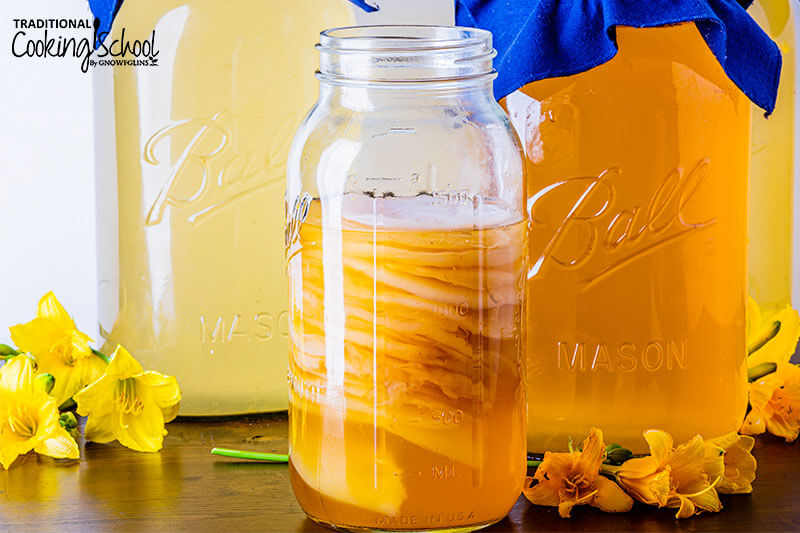
What Should I Do With The Extra SCOBYs?
Keep the newest growth in the brewing container and with the extras, you can…
- Share with a friend.
- Give it to your pets.
- Add it to the compost.
- Put it in your SCOBY hotel.
- I’ve even heard of people making jerky from their SCOBY!
Why Divide Your Scoby?
As I mentioned above, if you don’t divide your SCOBY it will just continue to grow thicker and thicker.
After a while, the ratio of sweet tea to SCOBY will be out of whack. Not only that, but the older SCOBYs aren’t as efficient at fermenting the sweet tea, so you may begin to notice an off-flavor, or your Kombucha may take longer to get to the desired taste.
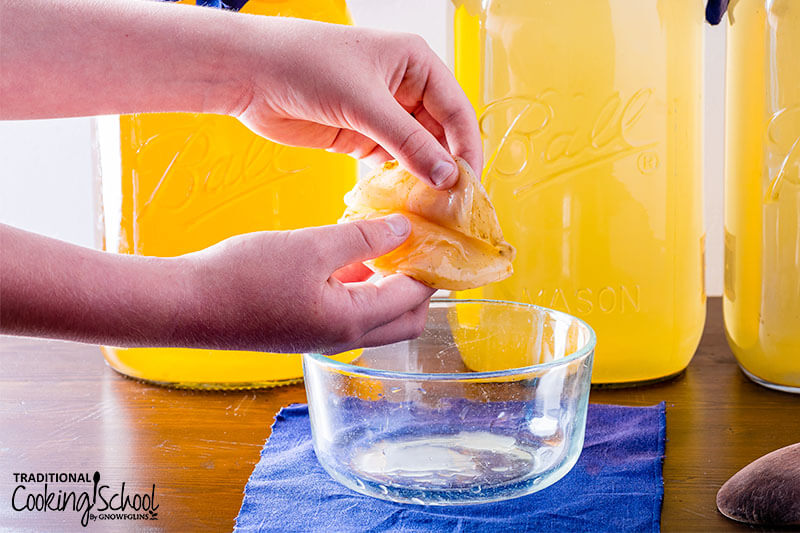
How To Divide Your Scoby
It may look soft, but it’s actually got a tough, almost leathery texture. Put a knife to it and you’ll find out it doesn’t really want to be cut.
You have 2 choices for dividing it.
- The easiest choice, which also makes the most sense for brewing, is to peel off some of the SCOBY horizontally so that you’re down to a 1-inch thick piece. Put the younger part (the top) back in your container, and pass the older part (the bottom) on.
- Or, you can cut off a piece — just use a very sharp knife or it will resist.
Don’t worry if your separated SCOBY gets rips or holes in it when dividing, as new SCOBYs grow on top, those holes will fill in and continue to thicken with each new batch.
And that’s how to divide your Kombucha SCOBY. Pretty simple, right?
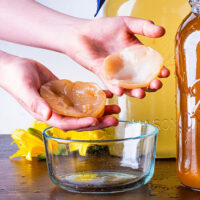
How to Divide a SCOBY
If you've been making Kombucha for a while, you know that the SCOBY (mother culture) grows thicker with each batch. Learn how to divide a SCOBY so you can share with friends, dehydrate it, give it to your pets, or add it to your SCOBY hotel!
Instructions
-
With clean hands, carefully remove your SCOBY from your Kombucha vessel.
-
Peel off the bottom layers until you're left with a 1-inch thick SCOBY.
-
Share, compost, dehydrate or place in a SCOBY hotel the remaining SCOBYs.
Recipe Notes
- Be sure you're working with clean hands and clean utensils whenever you're handling the SCOBY.
- If you're having a hard time separating the layers of your SCOBY, you can also cut it with a sharp knife.
- To save your extra SCOBYs, learn how to store them in a SCOBY Hotel.
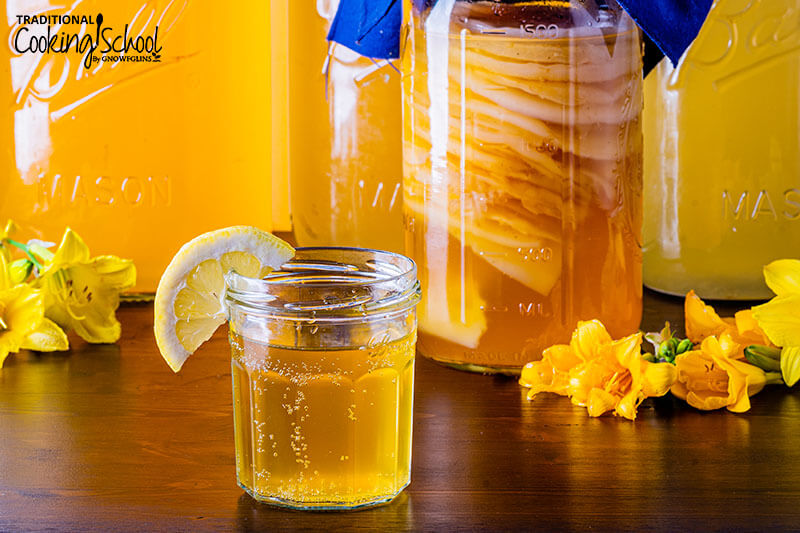
Helpful Links:
- The ULTIMATE Kombucha Guide {how to make it, store it, flavor it, SCOBY care, troubleshooting, and MORE!}
- How To Bottle Kombucha (aka Second Ferment) #AskWardee 086
- How To Divide A Scoby #AskWardee 083
- Can You Make Kombucha With Honey? #AskWardee 085
- How To Create A Scoby Hotel
- How To Make Kombucha
- Continuous Brew Kombucha (review)
- Where To Buy A Scoby
- FREE Fermenting Formulas Cheat Sheet
How do you divide or share Kombucha SCOBYs?
...without giving up the foods you love or spending all day in the kitchen!

2 free books:
Eat God's Way
Ditch the Standard American Diet, get healthier & happier, and save money on groceries...
We only recommend products and services we wholeheartedly endorse. This post may contain special links through which we earn a small commission if you make a purchase (though your price is the same).


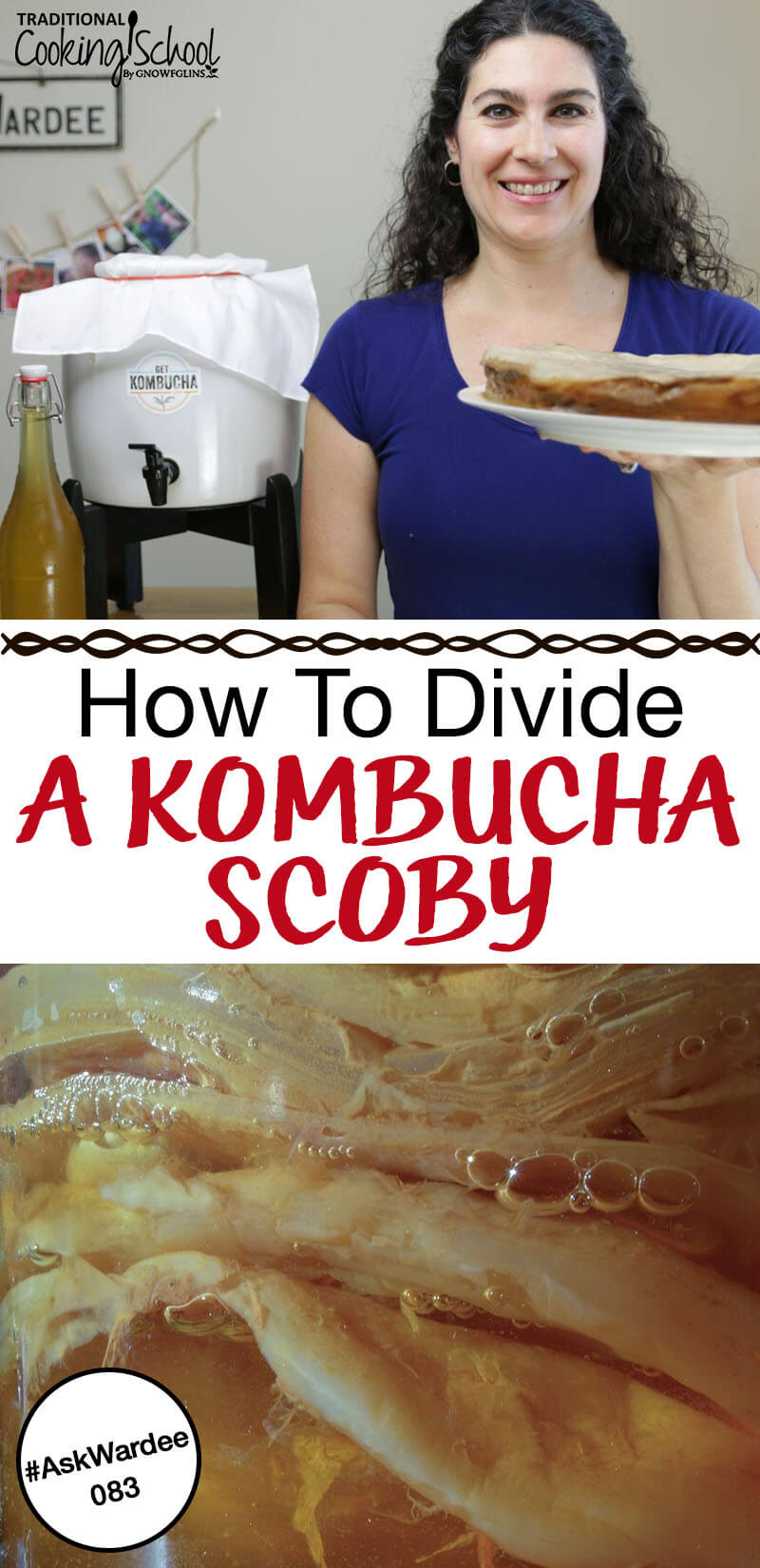
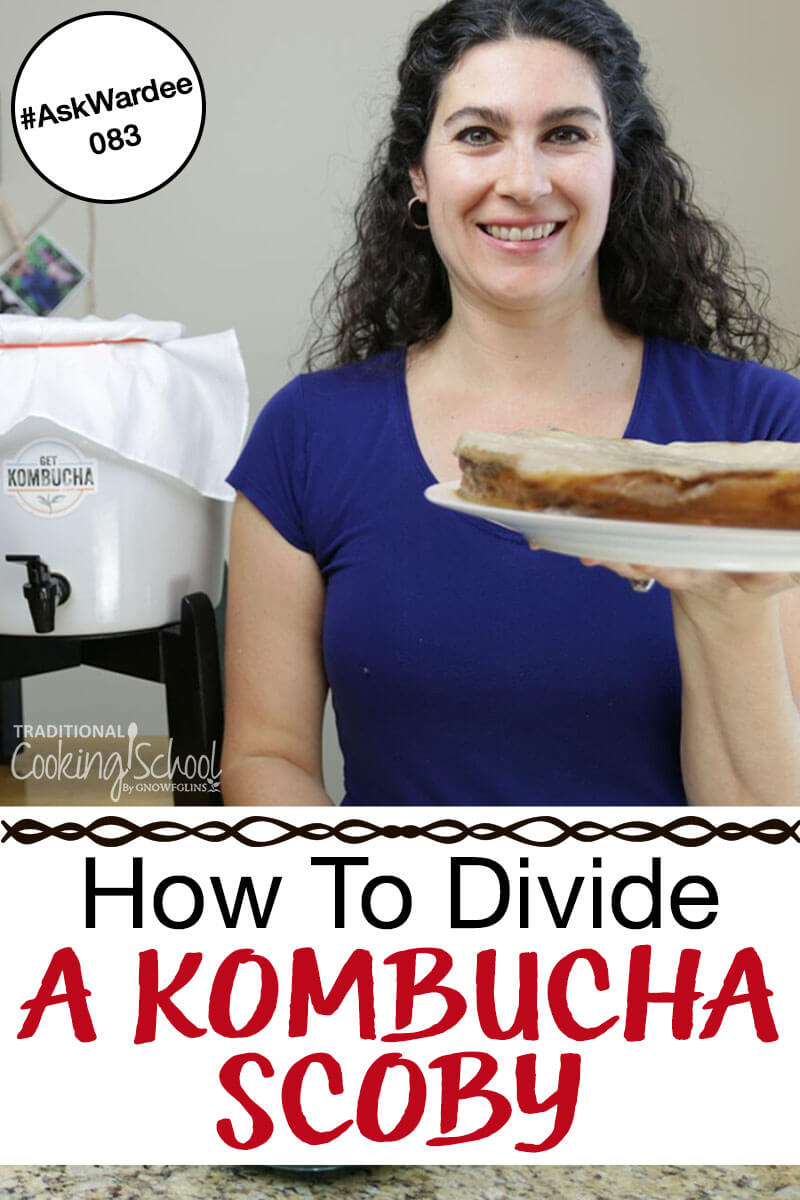
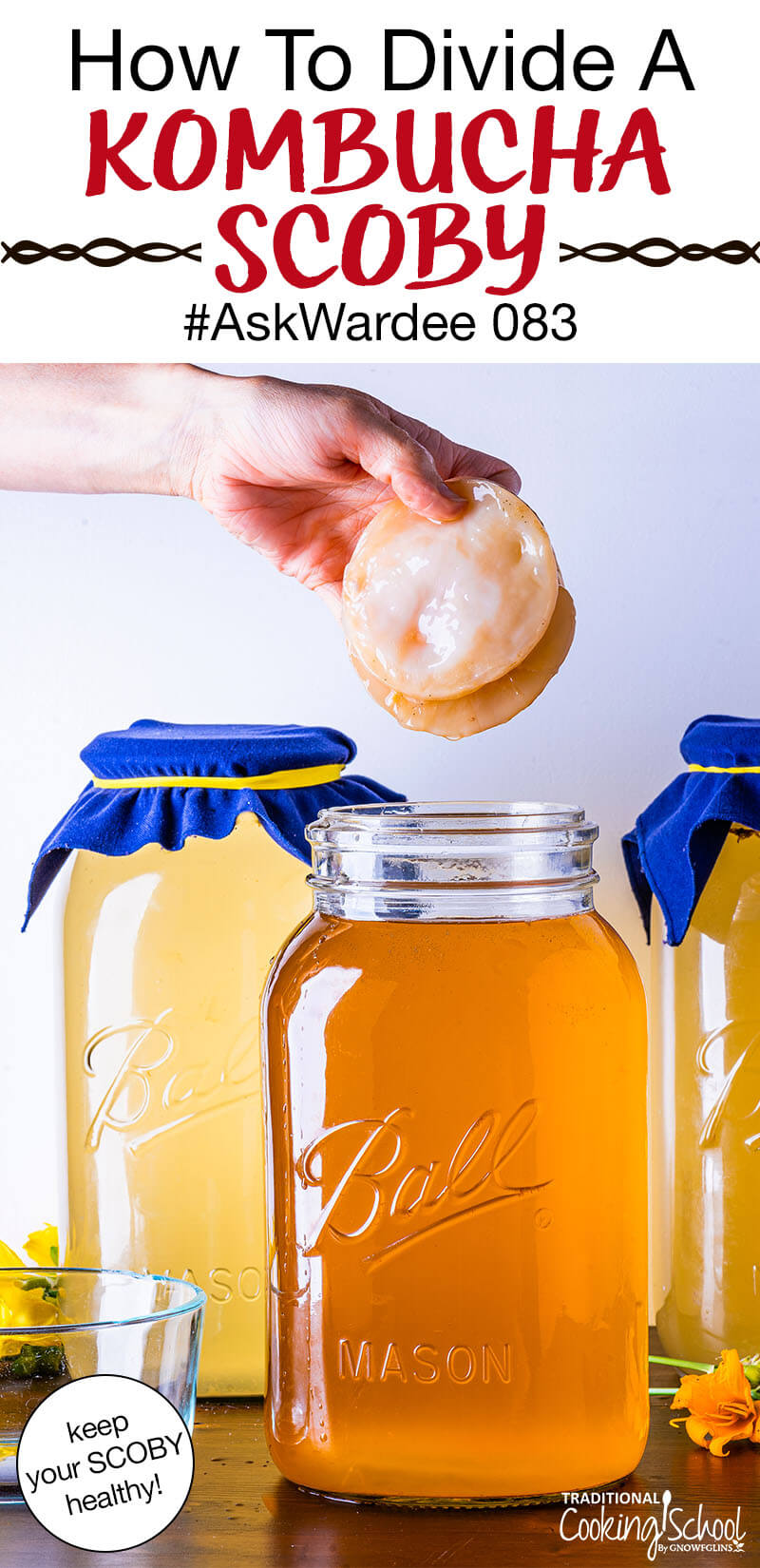

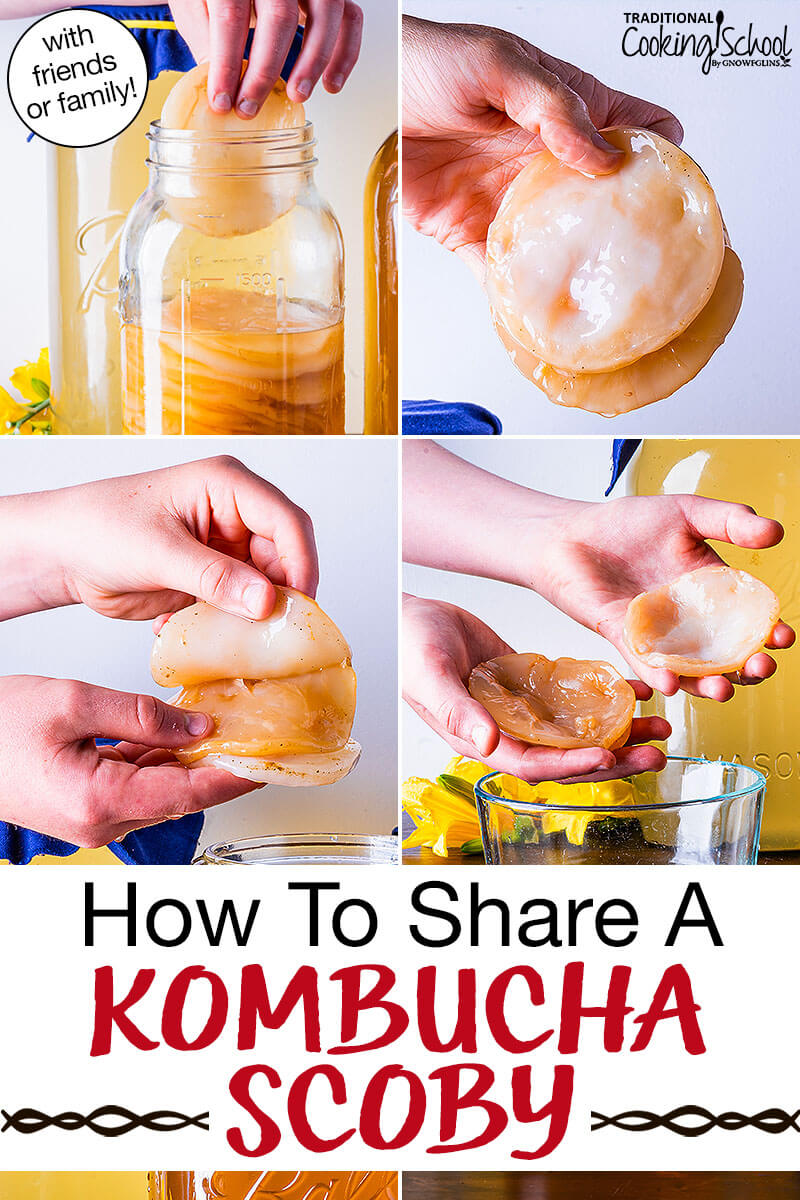
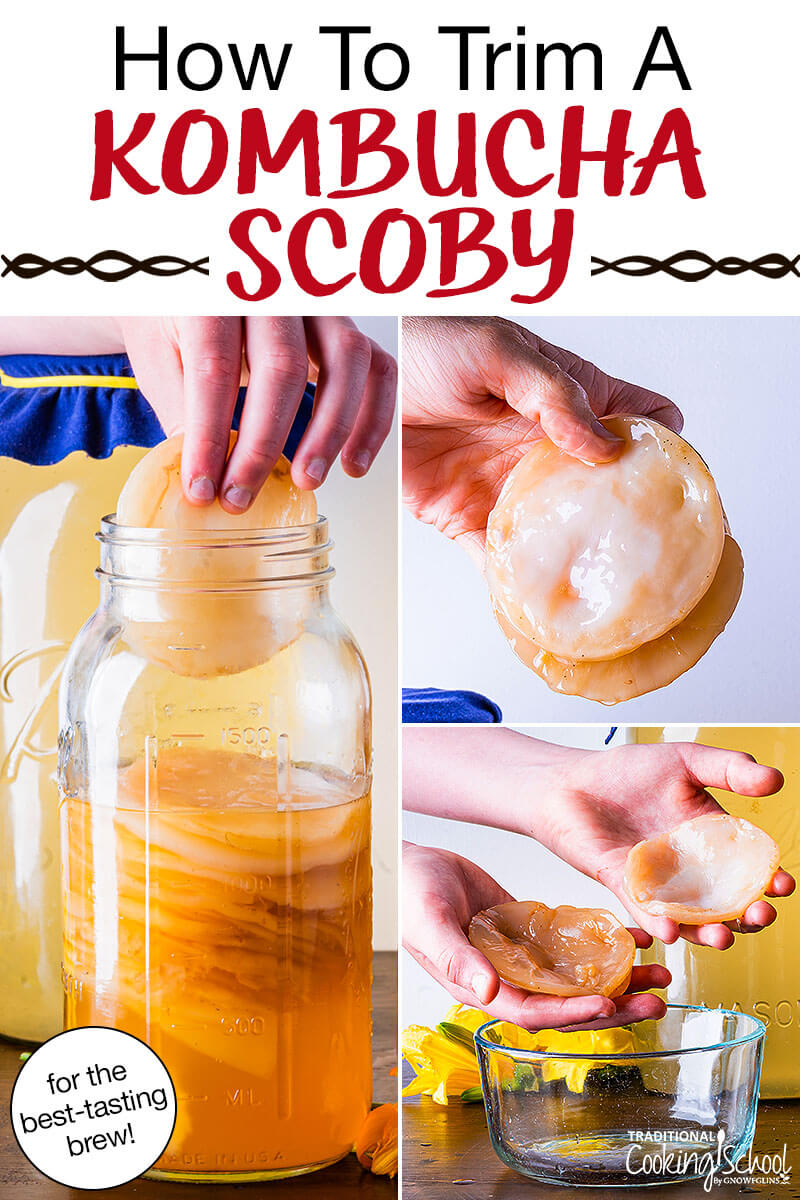
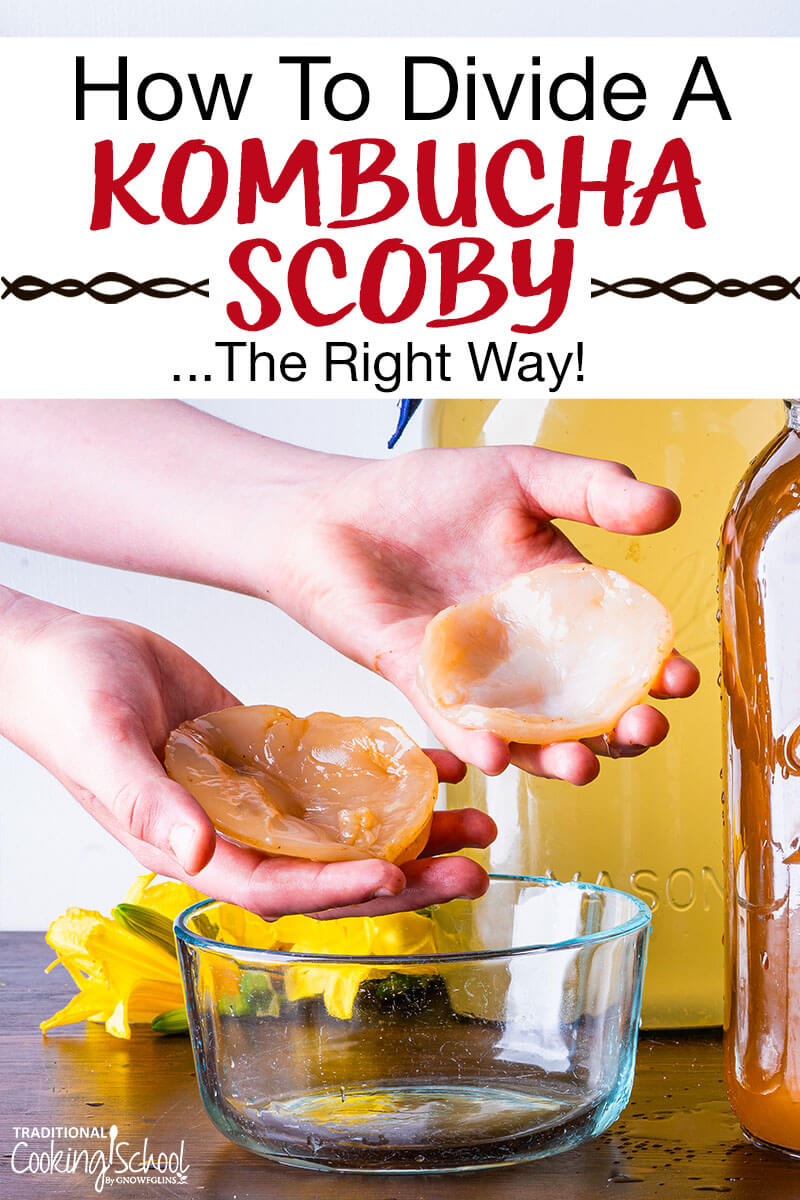
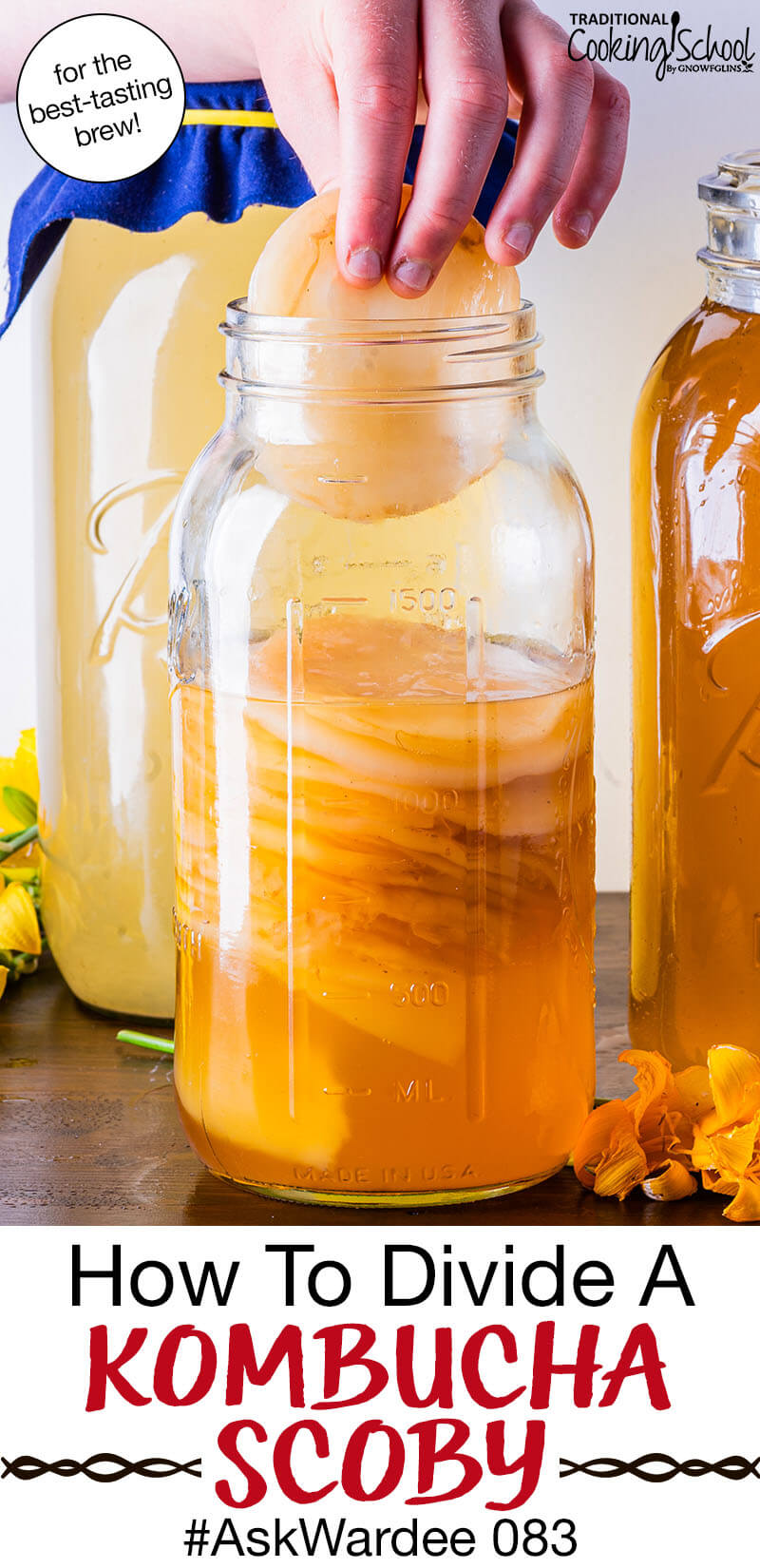

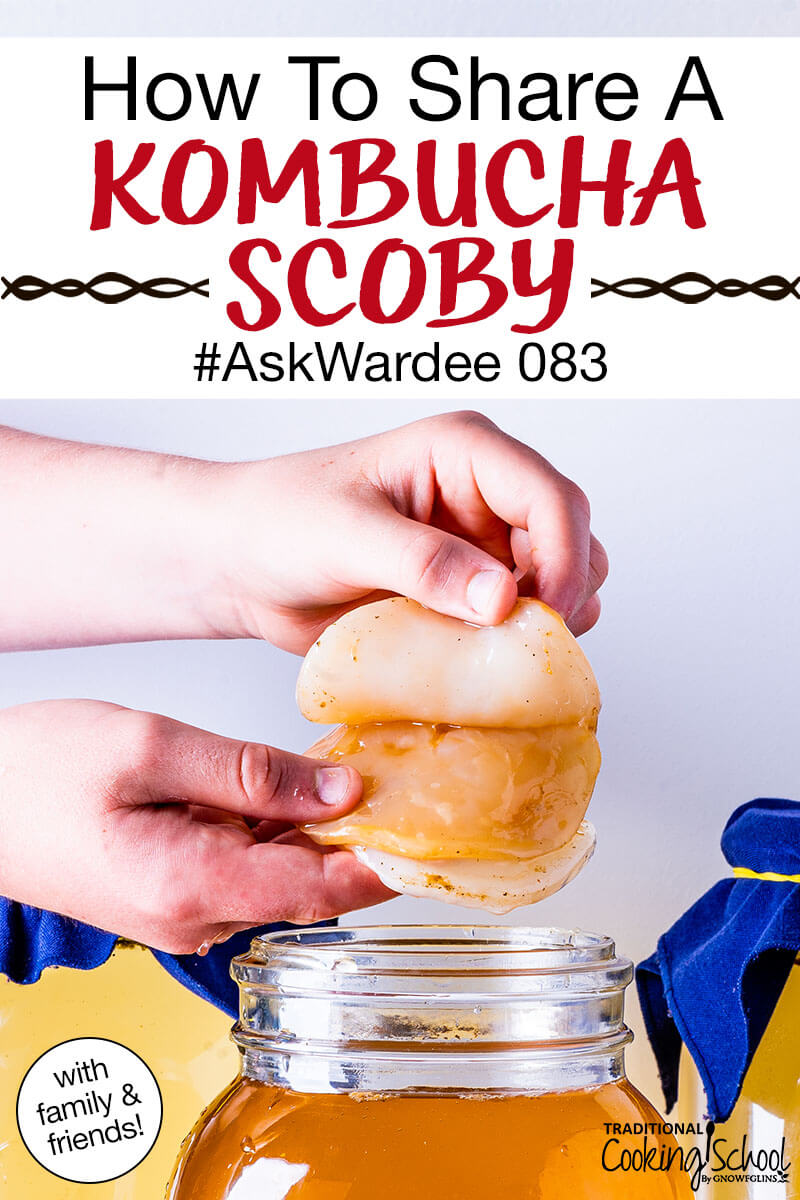
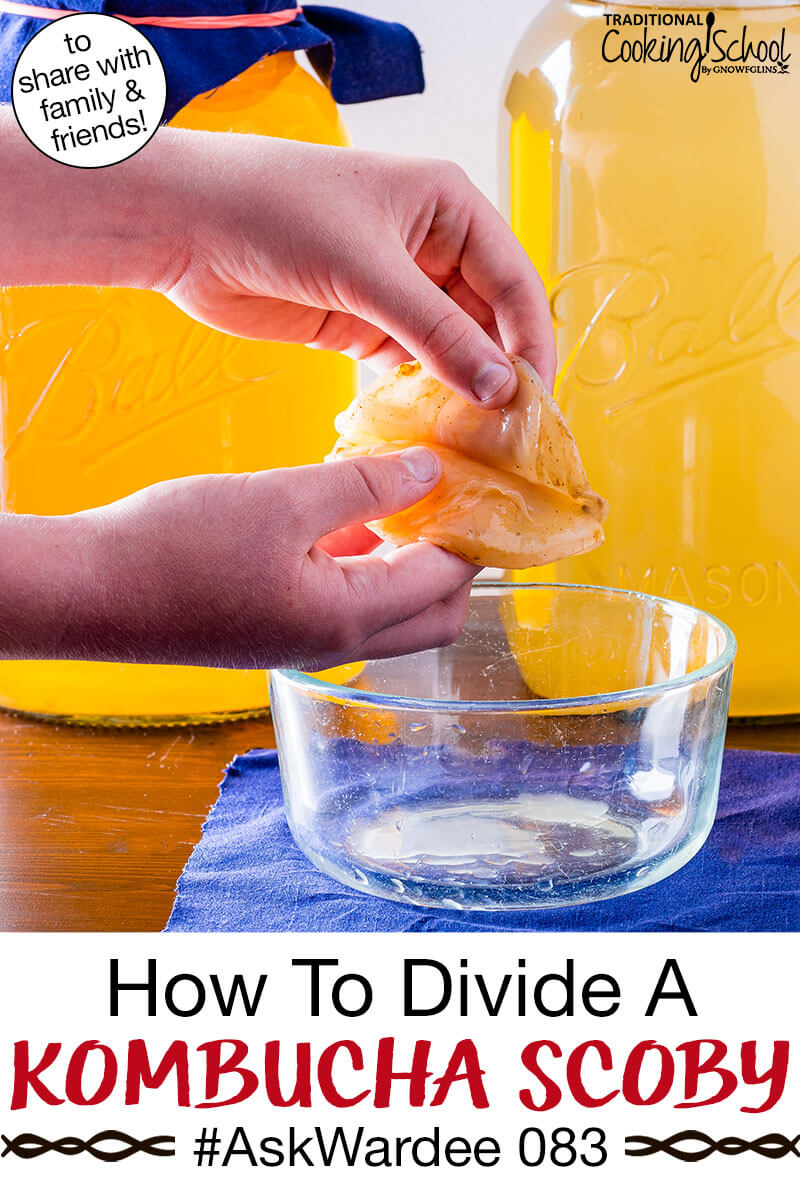

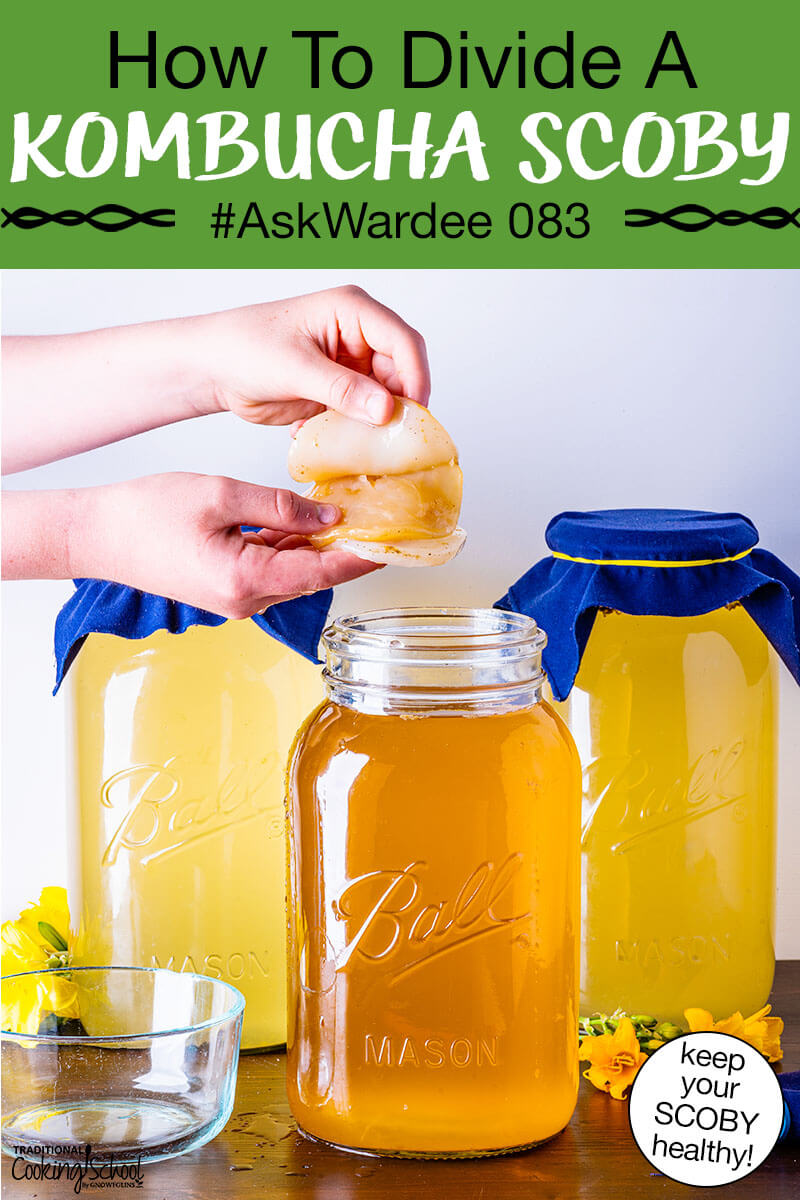
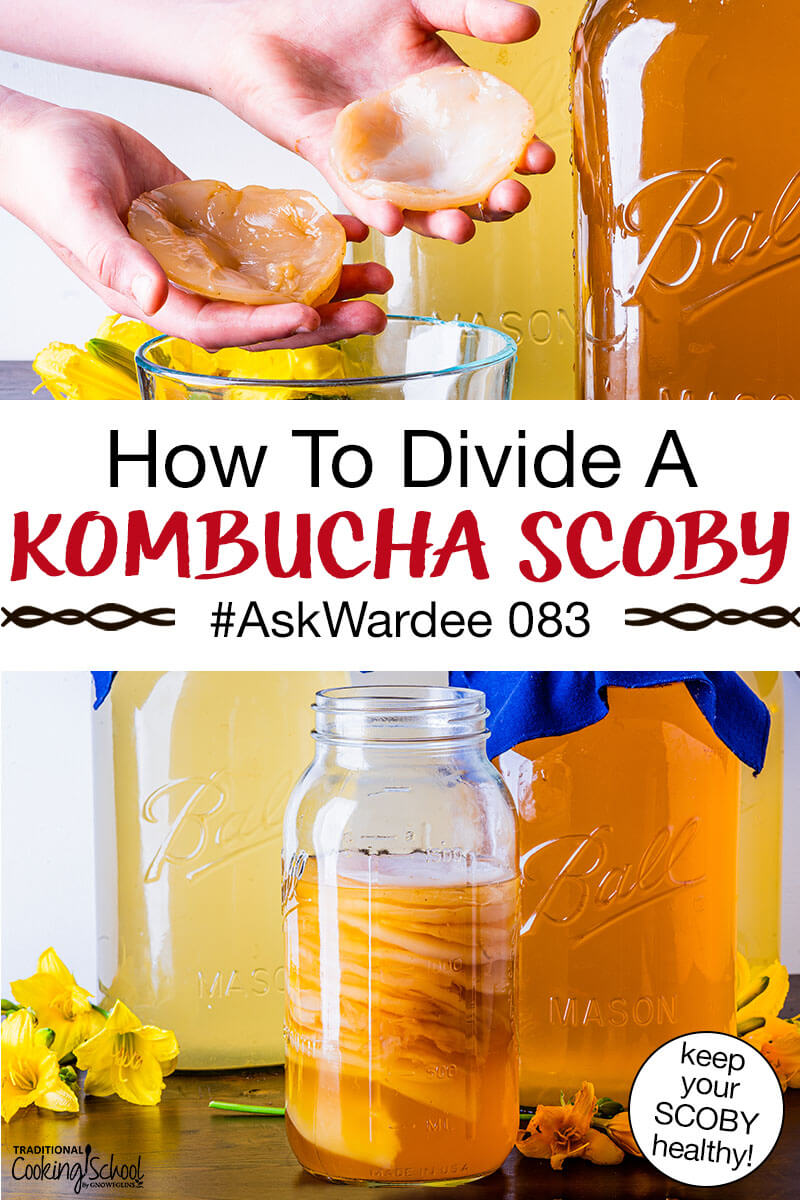
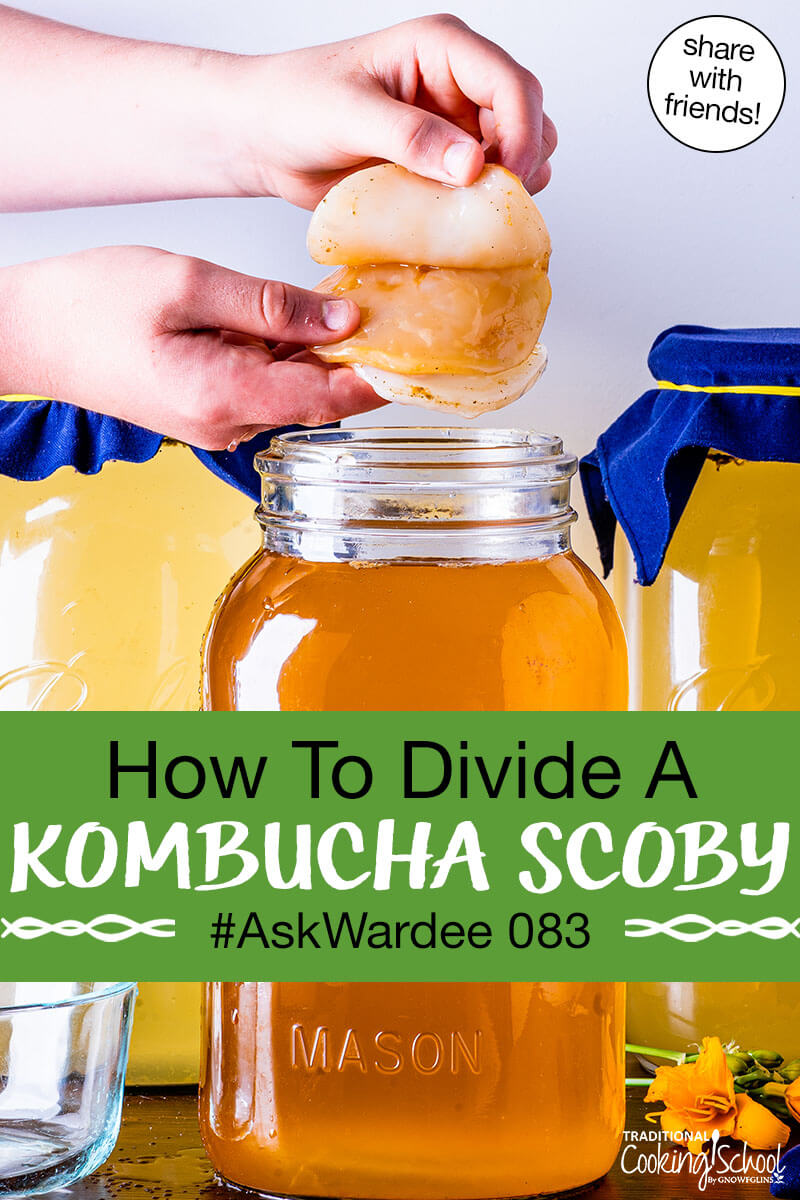
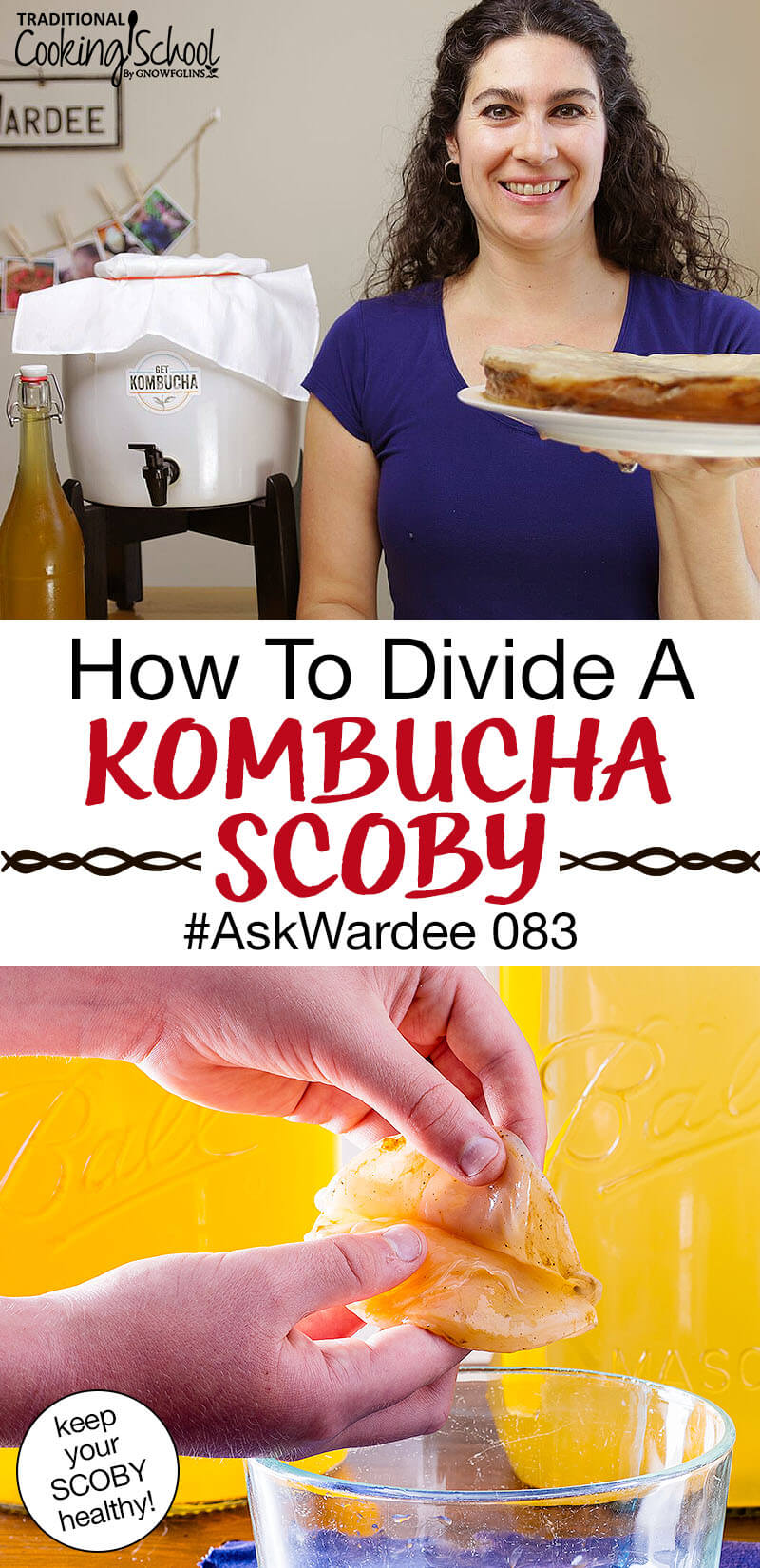
Hmm, I believe that the top layer of my scoby is the oldest, because it is narly looking whereas the under layers are just natural colored, so my incliniation would be to peel off the top layer and use the lower one for Booch.
Thank you for the great presentation. Another helpful tip: When peeling away layers of scoby, I have found it helpful to slide my fingers between the scobys and to gently pinch or massage the spots where they want to stick together. This helps prevent tearing.
the video on U tube will play only a portion of program …Really wanted to learn more about the scoby and what to do with them. anyone else have a problem or is just my computer.
Hi Judy,
Sorry you’re having trouble. Everything is working from our end so it’s likely an issue specific to your device.
First, try updating your browser. If that doesn’t work you could try a different browser.
If you need further assistance please email us at wardee (at) traditionalcookingschool (dot) com.
~Danielle, TCS Customer Success Team
The lady from whom I got my original SCOBY last March rather unceremoniously ripped a couple of larger ones into irregular chunks to give to whoever wanted one. I find that as mine grow, they tend to divide themselves into layered discs when they are ready. Sometimes a layer or two will detach completely, and other times it will just loosen around the edges as if telling me to tear on the dotted lines.
I found the information about the SCOBY hotel helpful, as earlier today I decided to make some fresh tea for mine. I stood looking at a large mixing bowl half filled with SCOBYs of various sizes and ages and said no, I cannot make a half gallon of tea for each one of those. Anyway, now I have two of the younger ones brewing fresh kombucha and sixteen others tightly packed into a hotel in my refrigerator, like some kind of strange pickled jellyfish. I will have to look into making jerky or something else out of them before they multiply any more.
Debbie,
I just yesterday became a new student w/Wardee… by any miracle, could/would you consider sharing a piece/layer of your stash scoby with the newest, most inexperienced student? If so, RSVP and I will send postage/mailing monies to facilitate the transfer gift’s travels to Maryland where I live. I look forward to hearing from you, soonest. Kind regards, I am Jennifer Ann Druding
Did you know you do not need a scoby to start brewing kombucha? A bottle of raw, unpasteurized kombucha is all you need. Google it for specifics or you can look it up on You Tube. I started out this way. It does work. And yes, you will eventually get plenty of fizz in your brews though it may take a while.
Jennifer, I don’t have a problem with sharing, but there has to be a better way. I live in northern VT, and am currently visiting family in CT, either way, a ways from MD. I don’t even know how well a scoby would survive the trip. You should probably try Naomi’s suggestion first, and don’t worry about being inexperienced. I only started this last March, four months ago.
Wardeh, I have an unrelated question about kombucha. Do you know if the kombucha continues to “accrue” the benefits of a long ferment after it has been bottled for a second ferment? I’ve been wondering for a long time…
Hi Naomi,
During the second ferment phase your kombucha will continue to ferment if left at room temperature.
If you pair your finished kombucha with juices that have a high sugar content this provides the bacteria in your kombucha more to feed on and will aid in the fermentation.
~Danielle, TCS Customer Success Team
We only use Stevia as a sweetener. Is it possible to use Stevia? Will it be harmed? The unrefined sugar is really difficult to find and I was just given a starter. What should I do?
Hi Mary Ann,
Sugar is required for the fermentation process. Stevia does not contain nutrients or proper food for the kombucha scoby. Trying to use stevia would not result in a proper fermentation (since sugar is required for fermenting). Sorry!
~ Millie, TCS Customer Success Team
Hi , if I double the mix in one jar do I need to add 2x Scoby for it to work .
Hi, Alice,
You only need one scoby.
~Peggy, TCS Customer Success Team
I had trouble with fruit flies when I made kombucha and kefir last year. To combat them I put a splash of wine plus a dash of dish soap into a little dish. I then covered the dish with plastic wrap with holes poked with a toothpick. Fasten the plastic with a rubber band. The flies are attracted to the wine, fly into the holes, get stuck and die. It is a gross and satisfying occurrence.
hi,
thank you for the video and the help,
i was just wondering, when cutting the scoby isnt it harmful to use metal? like a metal knife?
Hi Memed,
It’s fine to use stainless steel for quick things like this (cutting and stirring). For fermenting, it is best to use glass or lead-free ceramic tools. No plastic or metals where the contact is prolonged.
~ Vicki, TCS Customer Success Team
My first ferment was perfect! Tasty, fizzy, not vinegary. Ever since its been getting more and more vinegary and less and less fizzy. My last batch was just like drinking vinegar and had absolutely no fizz…which is my favorite part.
HELP
Hi, Sharon.
Ask Warde episode 24 may help. Here’s a link: https://traditionalcookingschool.com/q-a/askwardee-024-help-kombucha-sweet-not-fizzy/
~Danielle, TCS Customer Success Team
Hi, Sharon,
Here is a great resource to help with your not so fizzy vinegary kombucha.
https://traditionalcookingschool.com/food-preparation/ultimate-kombucha-guide/
Have a Blessed Day! ~Peggy, TCS Customer Success Team
Hi, I enjoyed your presentation. I’m diabetic. Can I drink Kombucha made at home? Or is it limited to average folks? The sugar is the problem. Also what about no caffeine?
Hi, Ana:
I’m happy to help!
Kombucha made at home would be the best for you to try because you can control how long you allow it to ferment and thus, how much sugar (if any) is left in the tea. And here is a link to an article about kombucha and caffeine: https://www.kombuchakamp.com/kombucha-and-caffeine-explained
—Sonya, TCS Customer Success Team
Hello….I have just finished making my initial scoby for making kombucha and I inadvertently cut off a brown spot that I thought was mold, but I know now that it was not mold and started my first batch with that part of the scoby cut off. Is it alright to continue to make my first batch of kombucha with this part cut off or should I start a new process of making a new scoby? It looked so healthy, it’s too bad I didn’t research it first before I cut that piece off.
Thank you….Paula
Hi, Paula: Your scoby should be totally fine! When a scoby gets too large, you typically have to cut it down to a manageable size anyway. As long as your scoby is healthy, even a small piece of it will continue to culture your kombucha — and keep growing! 🙂 —Sonya, TCS Customer Success Team
Thank you very much for your useful information! Hope to see more your post.
I wonder if it is dangerous to give pets a scoby because the tea usually has caffeine in it.